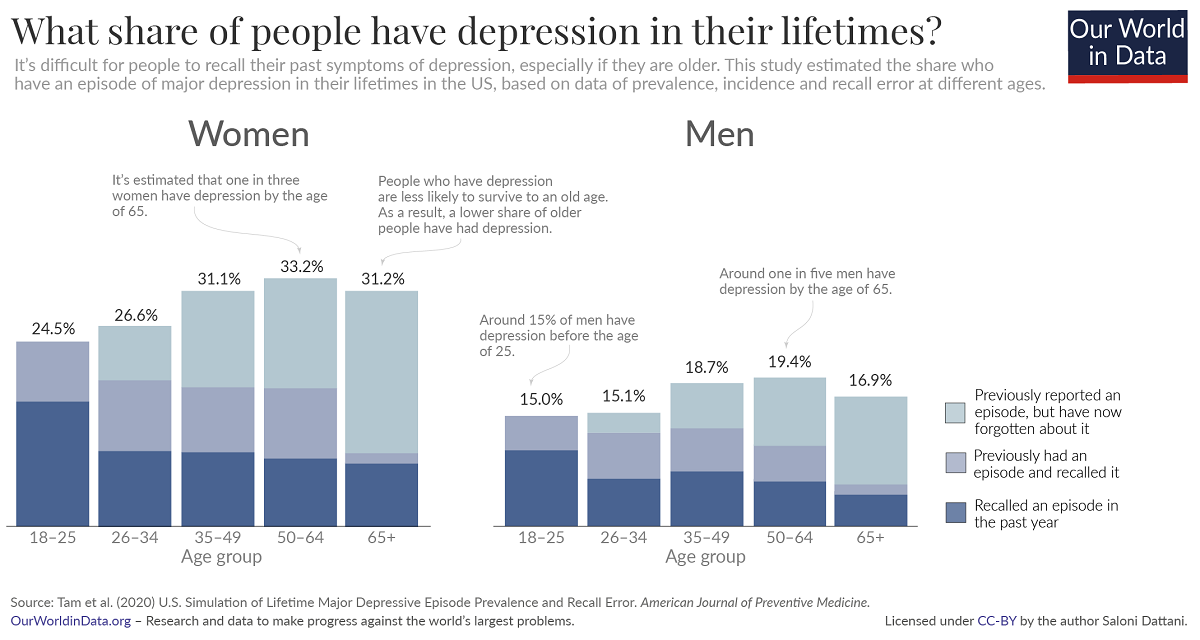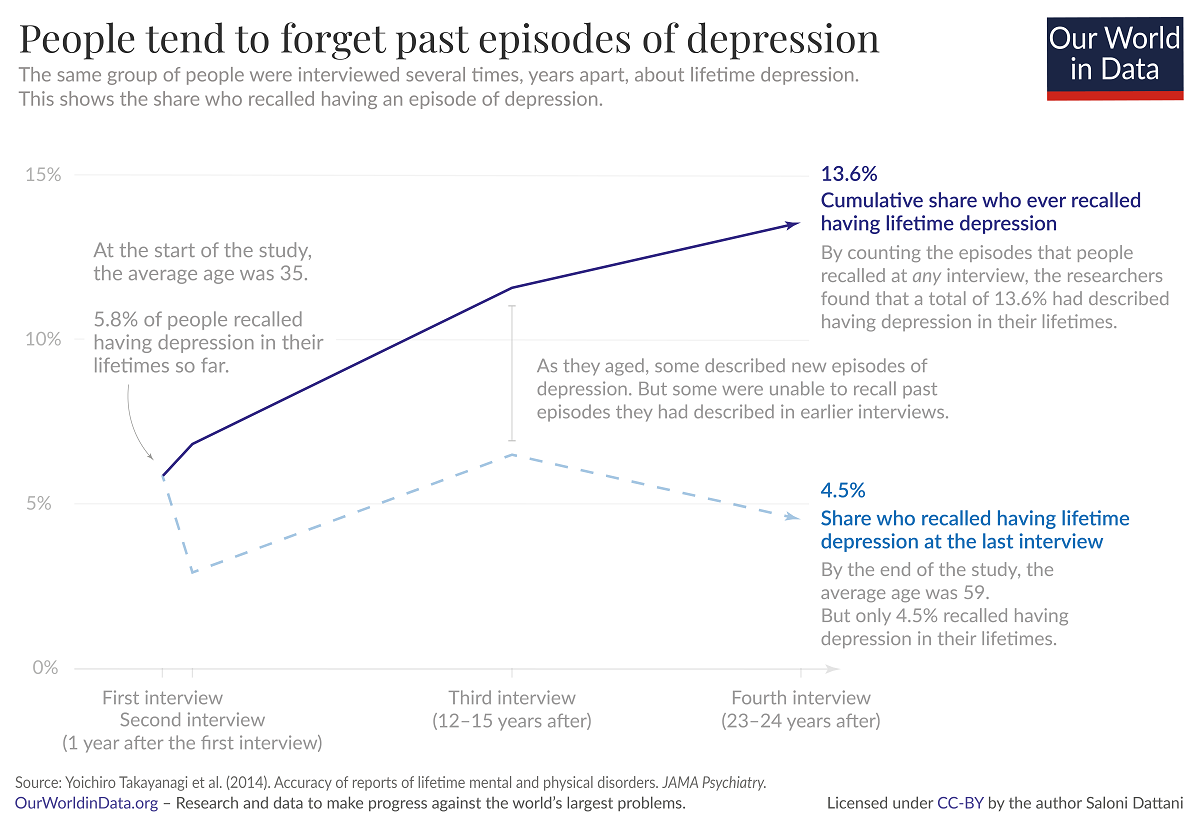
How Many People Get Depression in Their Lives?
Depression is one of the most common mental health ailments, affecting millions of people across the world.
According to Our World in Data, one in three women and one in five men in the U.S. suffer through at least one episode of depression in their lifetime.
These charts from Our World in Data use data presented in a 2020 medical study that examine the share of people in the U.S. that have had an episode of major depression.
Measuring Depression
While most illnesses can be measured using blood tests, brain scans, and biomarkers, diagnosing depression is a bit more complex.
This study looked specifically at episodes of major depression—feeling sadness or a pronounced loss of interest for at least two weeks, along with at least five of these symptoms: fatigue, trouble concentrating, feeling excessive guilt, thoughts of death or suicide, and changes in appetite, sleep or movement.
It used data from the National Surveys on Drug Use and Health, conducted between 2005 and 2017, and focused on three aspects:
- Major episodes of depression recalled in the past year.
- Recalled past major episodes of depression.
- Previously reported, but now forgotten, major episodes of depression (recall error).
How Many People Get Depression in the U.S.?
The study found that women were more likely to have major depressive episodes than men at almost every stage of their lives.
| Incidence of Depression by Age | Men | Women |
|---|---|---|
| 18‒25 | 15.0% | 24.5% |
| 26‒34 | 15.1% | 26.6% |
| 35‒49 | 18.7% | 31.1% |
| 50‒64 | 19.4% | 33.2% |
| 65+ | 16.9% | 31.2% |
Over 24% of women and 15% of men in the U.S. under the age of 25 reported facing major episodes of depression. Some researchers have attributed this gap to hormonal changes and societal pressures.
Generally speaking, these shares build up over time, with an estimated one-third of women between the ages of 50 and 64 having recalled a major episode of depression at some point in their lives, alongside 19.4% of men.
That said, for those 65 years and older, the incidence rate actually declines. That’s because people who have depression are less likely to survive to an old age.
Towards a Future Without Depression
One problem with measuring depression is that, the older people get, the more they fail to recall incidents of depression they’ve reported in the past.

But perhaps the biggest problem is still societal. For much of history, mental illnesses including depression have been stigmatized. As a result, getting treatment or seeking therapy was often kept under wraps.
However, a growing movement to recognize depression and the emotional impact of the COVID-19 pandemic have shined a light on the importance of mental health.
The number of adults getting treatment for depression is on the rise. However, that does not necessarily mean that more people are suffering from depression, as it could instead reflect that more people are recognizing symptoms and seeking help.
The post Charted: How Many People Get Depression in Their Lives? appeared first on Visual Capitalist.